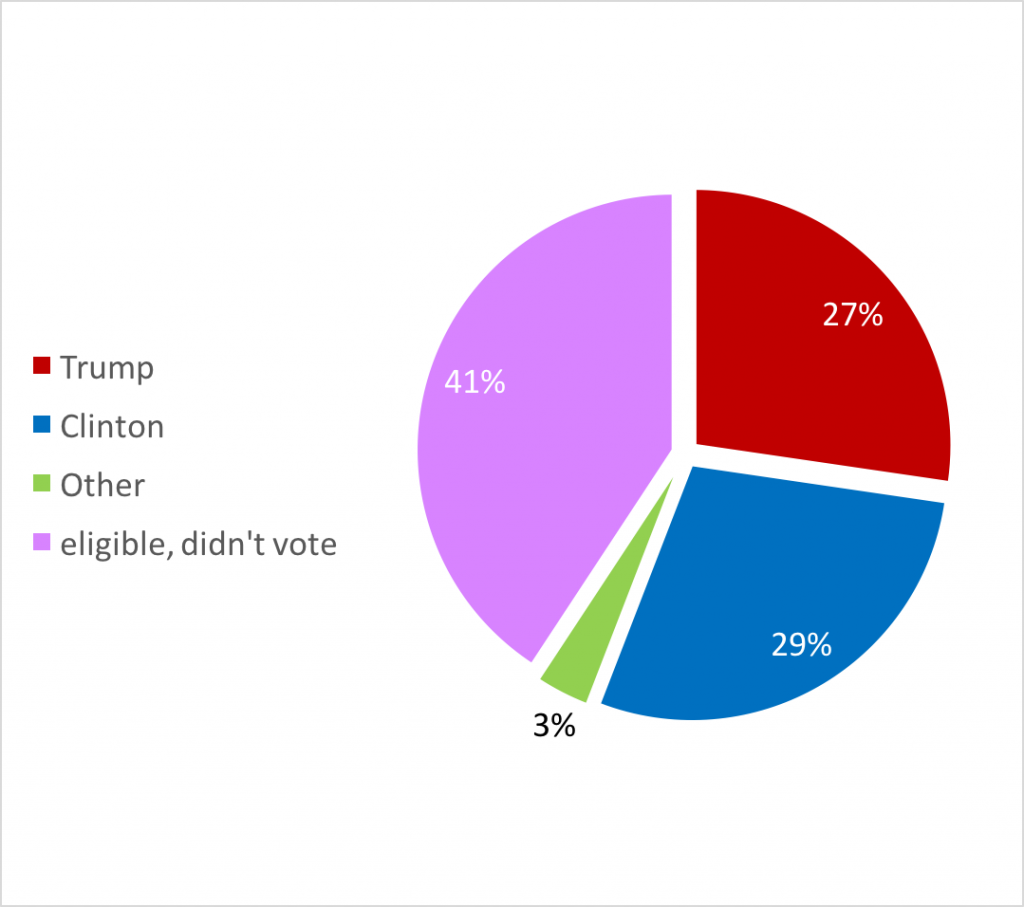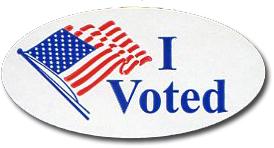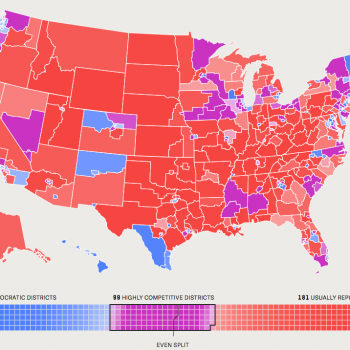Earlier, I wrote about the potential purple majority – the 41% of eligible voters who chose to sat out the election, which allowed the 2016 election to be a measurement of noise, not signal. That would still be a true statement had Hillary Clinton won. That is, fundamentally, a policy argument – the two parties do not offer anything to the Purple voters to persuade them to participate. However, there is also a structural problem in the way our democracy functions.
Despite losing the electoral college, Hillary Clinton won an authoritative majority of the votes cast. That is not the same as a majority of the eligible votes available. Consider the votes as an input signal to a black box, our Electoral Black Box (EBB), and the winner as the output. The fact that the EBB output is exactly opposite of the input shows that there is something wrong with the machine, not the input. I propose the unoriginal term, “electoral mechanics” for analyzing how the EBB works. The goal is to understand and optimize the “Flow” of votes through the EBB. Changing how the EBB functions requires legislative action, and in principle that action should be guided by principle, not by partisan concerns. The goal here is not to let Blue Team or Red Team gain a structural advantage; more precisely, the goal is to remove structural advantages for one team over the other. The system has been gamed. Simply speaking, there should be a configuration of the EBB that everyone agrees is fair, not just one side, so that the Flow represents the will of the eligible votes as a whole, and is a representative sample from the Red, Blue, and Purple pools.
In upcoming posts in this series, I will address individual elements of the EBB. I think though that as prologue, it is important to have a context for the discussion. I found the following to be quite compelling in that regard:
Our political system was designed by men who believed the mass public could make mistakes, and so they set up failsafes, emergency processes by which political elites could act. The Electoral College, which was ironically the key to Trump’s victory, was one of those failsafes — a collection of political actors who would be informed by the popular vote, but not bound by it.
(source: The case for normalizing impeachment, by Ezra Klein)
It is clear that those failsafes have failed. The reason they have failed is because the fail-safes relied on the political elites to act non-politically. With the benefit of 250 years of hindsight, we now know this assumption of the Founders was overly optimistic. Instead, we can more perfect our Union, by using tools we did not have a quarter-millenium ago.
I do not believe that the structural problems with the EBB are permanent, or require an Amendment to correct. I believe they are in fact addressable at the state level for the most part, and the reforms at the federal level are commonsense enough that they only require a post-partisan consensus for their urgency to become politically plausible. The real irony is that President Trump may be the catalyst for that consensus.












